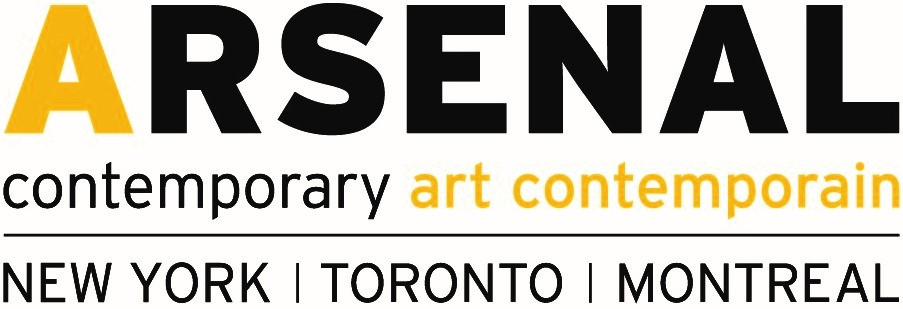Anthology
Monumental Works From the Collection
Oct 5, 2017 - Mar 28, 2018
Exhibition Artists
Korakrit Arunanondchai
Rodney Graham
Andreas Gursky
Thomas Houseago
Maskull Lasserre
An Te Liu
Rafael Lozano-Hemmer
Damián Ortega
David Spriggs
Arsenal Contemporary Art Montreal is pleased to present the exhibition Anthology, a selection of monumental works from the collection. The question of monumentalism is perceptible not only through their imposing scale, but also through their artistic language and underlying intention: mass consumerism, excess in current-day culture, the never-ending amassing, accumulation and repetition. Compiling an anthology of current-day phenomena is a contemporary process, meaning that it is both atypical and visionary. Contemporary art adopts a sideways glance at society, while emerging from and existing within this very society.
Surrounded by his possessions, an antiquarian nods off in his store. The work Antiquarian Sleeping in his Shop (2017), by Canadian artist Rodney Graham, is a keystone piece within this exhibition. An antique dealer’s trade embodies perfectly the challenge and questions raised by a group show. A dealer gathers and lays out side by side his treasures. Methodically orchestrated and arranged, the heterogeneous artifacts are nonetheless in odd harmony, order ruling within the chaos. Through the act of collecting emerges the notion of accumulation, abundance and one-upmanship. Active since the 1970s, the multi-disciplinary artist Rodney Graham makes himself the subject of his films and photographs. His narrative work offers a host of references to literature and philosophy.
The practice of young artist Korakrit Arunanondchai, while addressing current concerns, also ensues from Thai traditional beliefs, including Buddhism and animism. Born in Bangkok, he has a master in visual arts from Columbia University, New York. His work blurs the line between art and life, dealing with both the social reality specific to Thailand, as well as the phenomenon of globalization. In the current exhibition are presented two canvasses of colossal size, composed of commercial imagery, denim clothing and prints of flaming imagery. These works bring together consumer items, which the artist then denatures and transforms, covering them in multiple layers of paint and irradiating them with the same UV rays employed in tanning salons. The presence of gold evokes temples, such as the Temple of the Emerald Buddha (Wat Phra Kaew). Four Osaki massage chairs are placed facing the canvasses. In allusion to Thai massage, they evoke cosmetic consumer culture, while placing the spectator in a strange position, suspended between comfort and unease.
Andreas Gursky has long grappled with the aesthetic structures that underlie the manmade environment of hypermarkets, warehouses, libraries or various stock exchanges, to name just a few. He captures the excess of mass consumer culture in Media Markt (2016), proposing an unexpected view of the store from a high angle looking down, showing aisle upon saturated aisle of detail. On the bright white shelves, the colored objects stand out in stark contrast. The repetition and abundance of the products, meticulously organized, bring on a sense of vertigo. Gursky presents a worldview based on empirical observation of current day society, through photographic works deriving from a dialogue between representation and compositional abstraction.
Gold (2017) by David Spriggs recreates the façade of the New York Stock Exchange. Only that here, the artist - in an almost ostentatious gesture - turns it upside down. Intending to unsettle the splendor of capitalism, this British-Canadian artist illustrates the precariousness of its system. The work represents notably the growing inequalities within the pyramid of global wealth and its excessive concentration in the hands of a selected few. We observe that the figures inside the work appear subordinated, marginalized or simply excluded from the composition in which they are present, evoking perhaps the experience of many individuals within the current day economic reality.
Maskull Lasserre re-appropriates the use of archaic objects, rendering them obsolete. He hollows them out, revealing their skeletal structure and transforming them into anthropomorphic forms. His hybrid sculptures bring together antagonistic elements, such as the neck of a violin with a butcher’s knife. Nostalgia, happenstance and morbidity bring strangeness into familiar contexts, provoking a sense of uncertainty within the commonplace. Here, the artist reinterprets the Pietà of Michelangelo. This biblical scene represents the body of a lifeless Christ, brought down from the cross, held in the arms of a distressed Virgin Mary. Only that here, Maskull Lasserre replaces the Virgin Mary with a forklift, with the hidden body of a naked Christ covered in a rusted iron sheet. The work evokes the passage of time.
Damian Ortega’s works teeter between equilibrium and precariousness, conveying a sense of dynamism, movement and a certain fragility. The twenty-six letters of the alphabet float in space, legible by their shadows projected onto the floor. To achieve this effect, the artist twisted steel girders, commonly used for reinforced concrete pouring, into abstract forms. Suspended by fine metal wires, the heavy material appears alleviated of its usual properties. This extraordinary, even paradoxical, proposition breathes into the steel the impression of levity, producing the illusion of a vaporous, ethereal structure. In his artistic practice, Ortega delights in presenting in original ways industrial materials, such as an array of disassembled car parts or a fragmented atomization of work tools.

